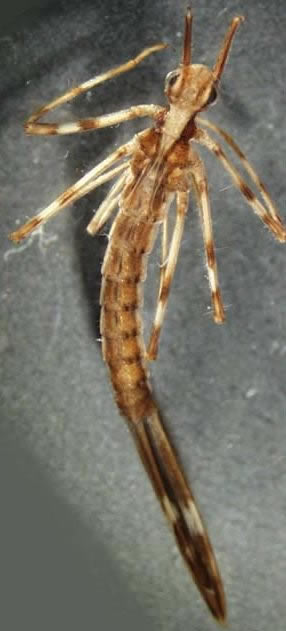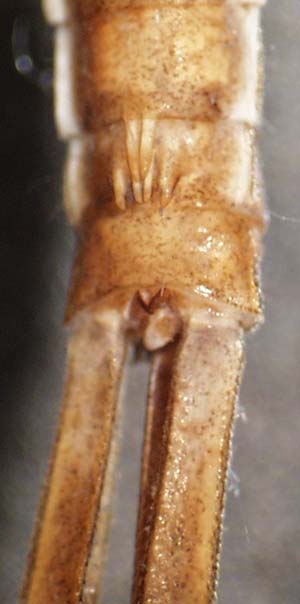
THE XERCES SOCIETY FOR INVERTEBRATE CONSERVATION Aquatic Invertebrates in Pacific Northwest Freshwater Wetlands |
| Identify taxa |
Calopterygidae (jewelwings) |
Only two species of jewelwings are found in the Pacific Northwest: the river jewelwing (Calopteryx aequabilis) and the American rubyspot (Hetaerina americana). The river jewelwing is more likely to be found in the Northwest than the American rubyspot. Jewelwings are not common in wetlands, as they live mainly in streams and rivers, where they crawl among the vegetation and exposed roots at the edges. The larvae have distinctive antennae, the first segment of which is longer than all the other segments combined. Their bodies, legs, and plates at the end of their abdomen are long and thin. The middle plate at the end of the abdomen is shorter than the other two. The center of the labium has two prominent lobes with a deep notch or indentation between them. In the American rubyspot, the grabbing part of the labium (prementum) is split in the middle only to about the base of the outer lobes, whereas in the river jewelwing, the prementum is split almost to where the sides begin to angle outward. |
Size:
large to xlarge Identifying feature(s): long antennal base segments; middle plate at the tip of the abdomen is shorter than the two outer plates; labium with deep notch Habitat: stream dwellers; larvae occupy vegetation and debris in moderately fast to slow-moving water Tolerance to pollutants: moderate |
 |
|
© 2007 Xerces Society
Contact info@xerces.org




